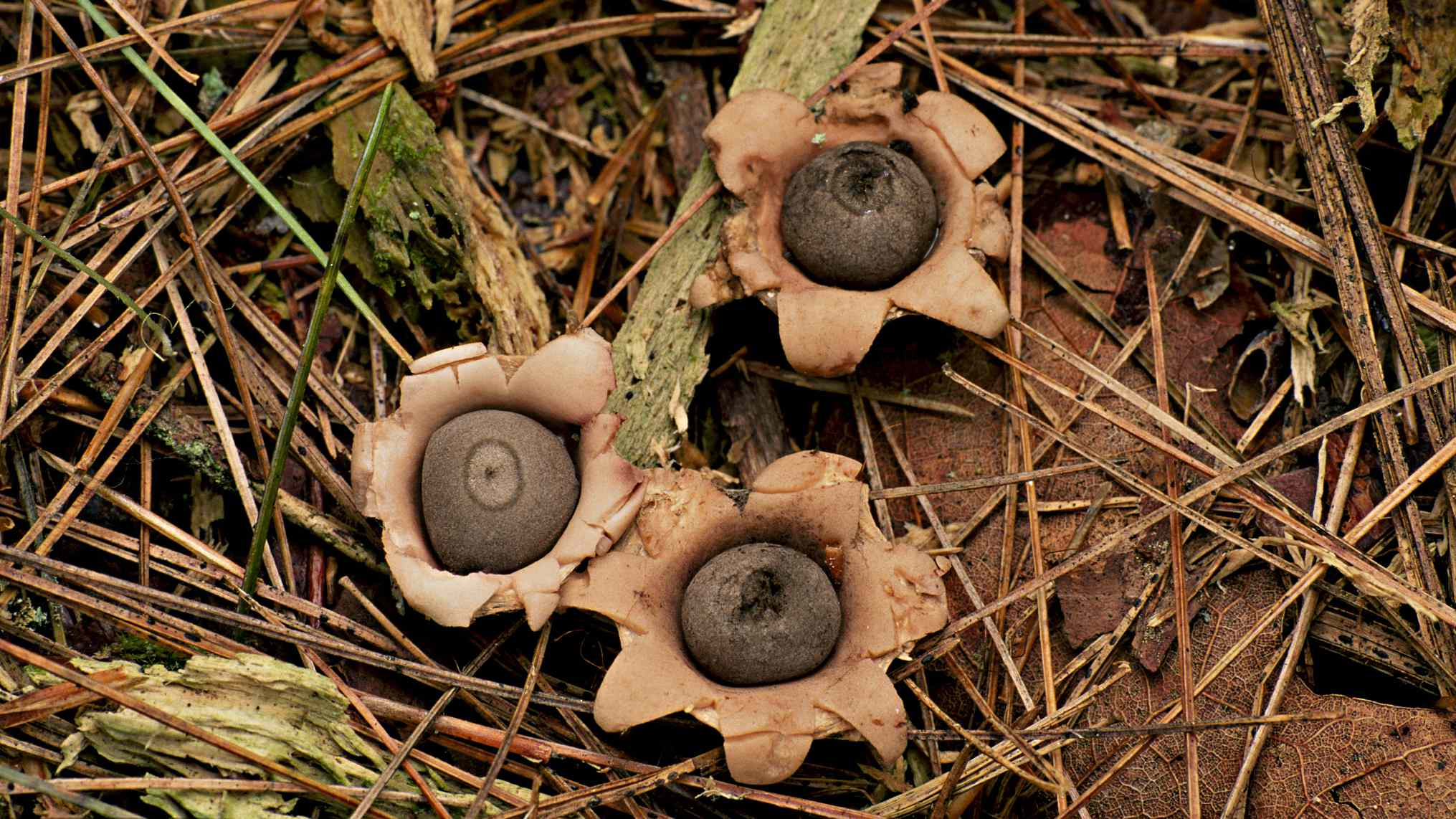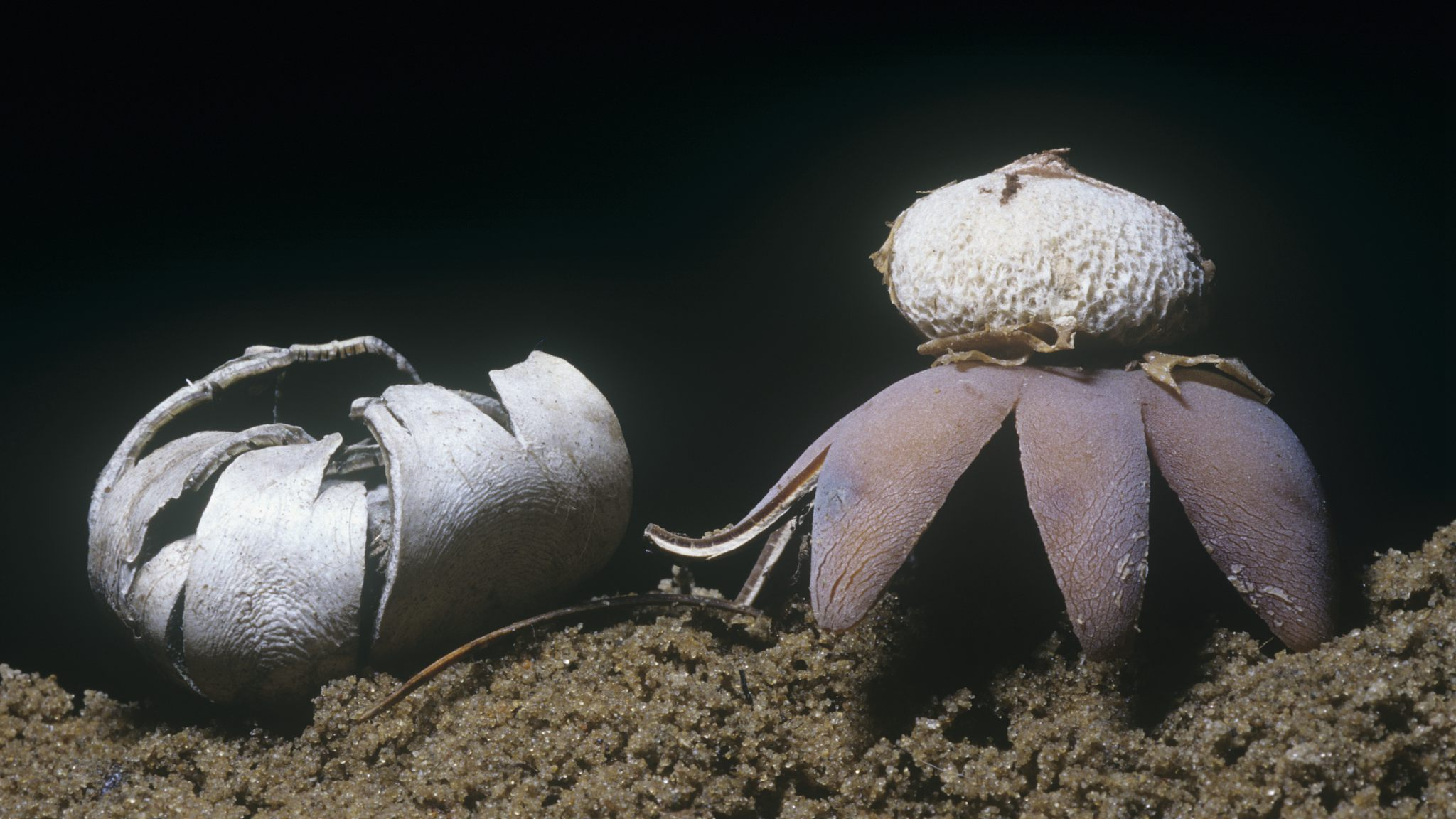
Plant
15:22, 18-Feb-2019
Alien fungi – the fallen star praying for moisture
By Zhao Ying

In late summer and early autumn, clusters of brown puffball-like fungi begin to transform themselves into tiny “stars” as the wind blows through the woods. These “stars” on the ground are generally called earthstar fungi.

Rounded earthstar fungi. /VCG Photo
Rounded earthstar fungi. /VCG Photo
The most commonly seen earthstars are rounded earthstar, collared earthstar, and barometer earthstar. Among them, rounded earthstar and collared earthstar belong to Geastrum genus while barometer earthstar is under Astraeus genus. Unlike most fungi that thrive in damp ground, the earthstar fungi grow in sandy, dry soils.

Collared earthstar fungi. /VCG Photo
Collared earthstar fungi. /VCG Photo
Before opening up, their immature fruiting bodies look a bit like yellowish brown onions with a pointed tip. When the outer layer opens as earthstars mature, the spore sac within will be exposed to the air and the outer layer will split into several rays, forming a star-like structure.
When the puffball-like inner ball is blown across by the wind or hit by raindrops, it can release thousands of tiny smoke-like spores from the small hole at the top of the spore sac.

Barometer earthstar showing sac and rays, which open in wet weather. /VCG Photo
Barometer earthstar showing sac and rays, which open in wet weather. /VCG Photo
For barometer earthstar, its rays can push the fruiting body a centimeter or two above the ground like an octopus stretching its legs on the ground, increasing their spores' chances of being scattered further. Intriguingly, its rays open and close depending on levels of moisture in the air and the soil on which they grow.

Barometer earthstar showing a dry mushroom on the left and a damp one on the right, North America. /VCG Photo
Barometer earthstar showing a dry mushroom on the left and a damp one on the right, North America. /VCG Photo
The rays will unfold as the humidity increases and will close in dry weather to protect the spore sac from being eaten by snails. The barometer earthstar usually takes less than five minutes to completely open up. However, it may take days to close again because of the moisture left in the rays.
The cosmopolitan barometer earthstar can be found in Europe, Asia, Africa, South America, and even Australia.

SITEMAP
Copyright © 2018 CGTN. Beijing ICP prepared NO.16065310-3
Copyright © 2018 CGTN. Beijing ICP prepared NO.16065310-3